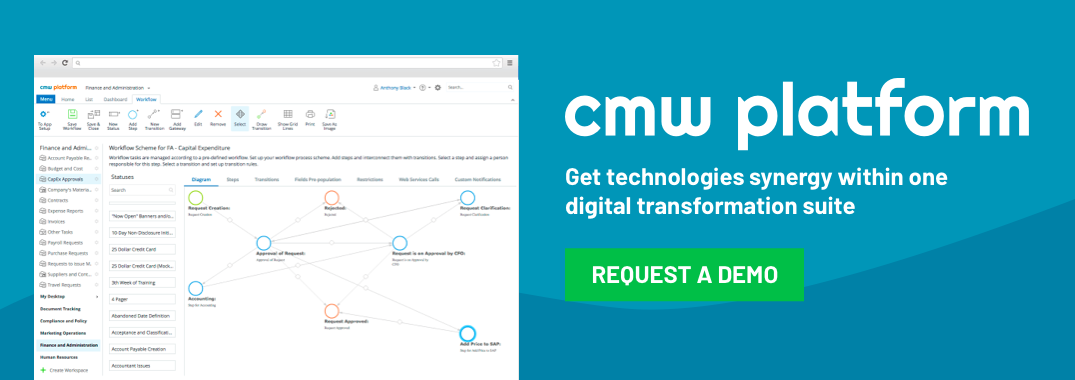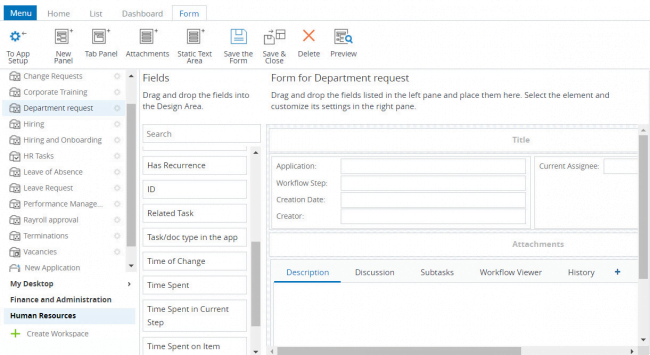Why Are Forms Crucial for Your Workflows
March 28, 2025
For modern businesses, efficiency is a necessity rather than an advantage. Organizations are always in pursuit for new ways to enhance operational efficiency and stay relevant to new developments in their industry. One of the most popular components of automation is the automated workflow, which is a set of sequential driven actions aimed to achieve a business objective in an efficient manner. One of the major components of workflow automation software is form. Although other tools may have the same level of importance in automated workflows and business processes, forms are the most essential. Workflow forms are much more than simple data capture devices – they are often the primary trigger of many business activities. In this article, we provide an explanation of why forms are critical as well as how optimizing forms can help achieve greater workflow efficiency.
Table of Contents
The Evolution from Paper to Intelligent Digital Forms
The days of cumbersome paper forms are rapidly fading. Digital forms and electronic forms within form and workflow software represent a significant leap forward. They are integral components that drive the success and efficiency of your automated processes.

Common Pitfalls to Avoid in Modern Form Design
Before diving into the benefits, it’s crucial to understand what not to do when designing workflow forms for 2025:
- Simply Mimicking Paper: Resist the urge to replicate old paper formats digitally. Paper forms often contain excessive fields, leading to bloated systems and irrelevant data captured. Focus on the essential: design your web form or online forms to capture only the necessary information for that specific workflow step. Purpose of forms should be clarity and efficiency.
- Creating Approval Bottlenecks: While approvals are necessary, overly complex or numerous approval levels can severely hinder process speed. Modern forms workflow design limits approvals to only the most critical personnel, preventing bottlenecks.
- Building Rigid Structures: Business needs change. Your forms and workflows must be adaptable. Avoid creating forms that are difficult to edit or update. Modern forms automation and workflow solutions should allow for easy modification of fields as requirements evolve.

Workflow management software by CMW Lab enables non-technical users to design their own workflow forms with drag’n’drop simplicity
7 Key Reasons Why Optimized Forms are Essential for Workflow Success
Well-designed and flexible digital forms offer significant advantages, directly impacting your bottom line and operational agility. Here’s why forms are important:
- Eliminate Paper & Manual Entry: This is the most immediate benefit. Digital forms remove the need for printing, manual data entry, physical storage, and distribution, instantly reducing costs and clutter. All collected information is handled electronically.
- Heave Data Accuracy & Reduce Errors: Workflow forms can incorporate validation rules, dropdown menus, and conditional logic. This ensures data is entered correctly at the source, significantly minimizing errors that plague manual processes. The form includes mechanisms for higher data integrity.
- Accelerate Processes & Save Time: Automated workflows triggered by form submissions move tasks along instantly. Data doesn’t sit in in-trays; it flows directly to the next step or system. This dramatically reduces cycle times and helps you save time.
- Enhance Employee & Customer Experience: Simple, intuitive online forms accessible on desktops or mobile devices make work easier for employees. For customers, streamlined web form interactions improve satisfaction and create a better customer experience and level of customer service.
- Better Operational Efficiency: By capturing only necessary forms data and automating subsequent steps, you improve efficiency significantly. Resources are freed up from manual tasks to focus on higher-value activities.
- Enable Scalability: As your business grows, so does data volume. Well-structured forms and workflow software can easily handle increased loads without breaking. Workflow processes built on scalable forms can adapt to growing demands.
- Strengthen Security & Compliance: Digital forms provide clear audit trails. It’s easy to track who submitted data, when, and what changes were made. This is crucial for security audits and meeting compliance requirements (e.g., GDPR, HIPAA where applicable). Forms are key to traceability.
Designing Powerful Workflow Forms with Modern Tools
Creating effective form workflows doesn’t require coding expertise anymore. Modern form and workflow software, like the solutions offered by CMW Lab, empowers non-technical users.
- Intuitive Form Designer: Utilize drag-and-drop interfaces to build custom forms quickly.
- Flexibility: Easily add, remove, or modify form fields as your business processes evolve.
- Seamless Integration: Connect your forms to other business systems (CRM, ERP, etc.) for smooth data flow. ISO forms workflow automation principles can be applied for standardization.
CMW Lab’s platform makes it simple to create and adapt workflow forms without relying on IT. Design the right form for the job, whether it’s for approvals, requests, order handling, or any other workflow processes, ensuring you capture all required data effectively.
Beyond Basic Forms: Leveraging Forms Automation & Workflow
The real power comes from forms automation & workflow. This means the form itself triggers actions, routes information based on the data captured, sends notifications (e.g., via email address), and moves the process forward automatically. This is the core of true digital transformation in operations.
Conclusion: Forms are Foundational to Workflow Automation
In conclusion, automated workflows are indispensable for efficient business operations in 2025. The effectiveness of these workflows is intricately connected to quality and intelligence of the workflow forms. Thoughtful form design using contemporary forms automation tools is essential for improving productivity, user experience, and competitiveness. Realizing the role forms play is the beginning of optimizing your essential business processes.



